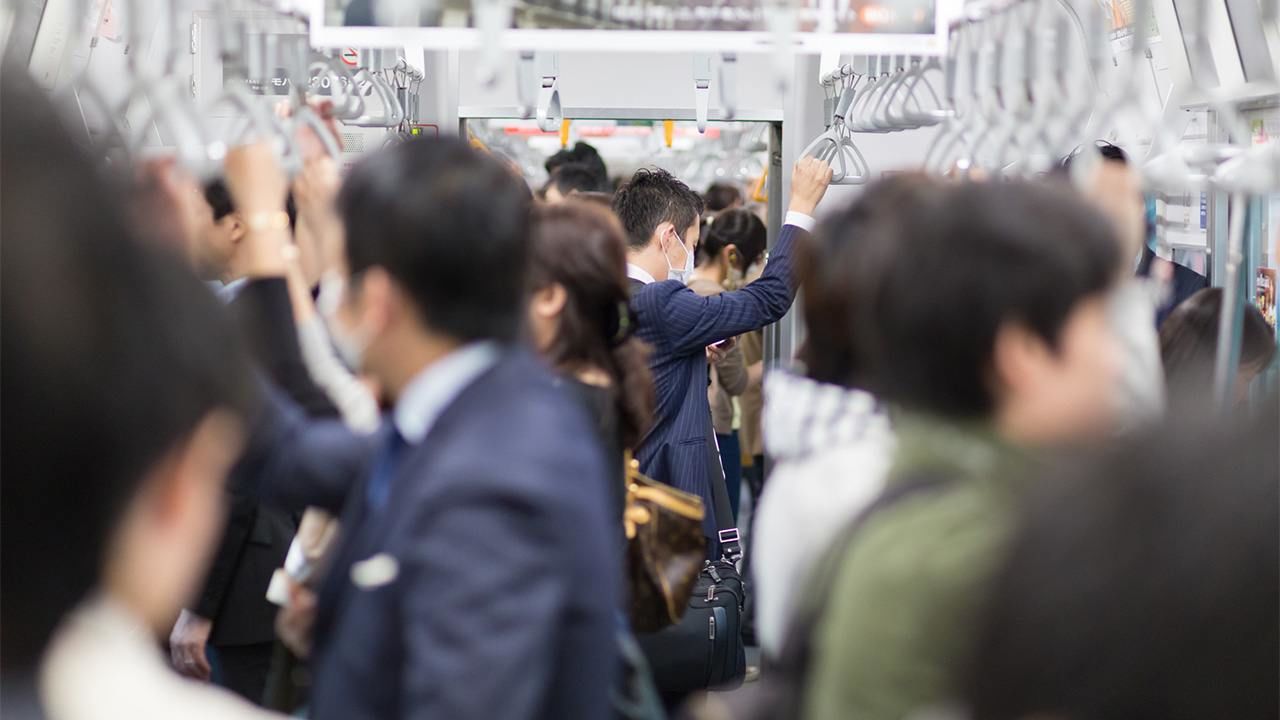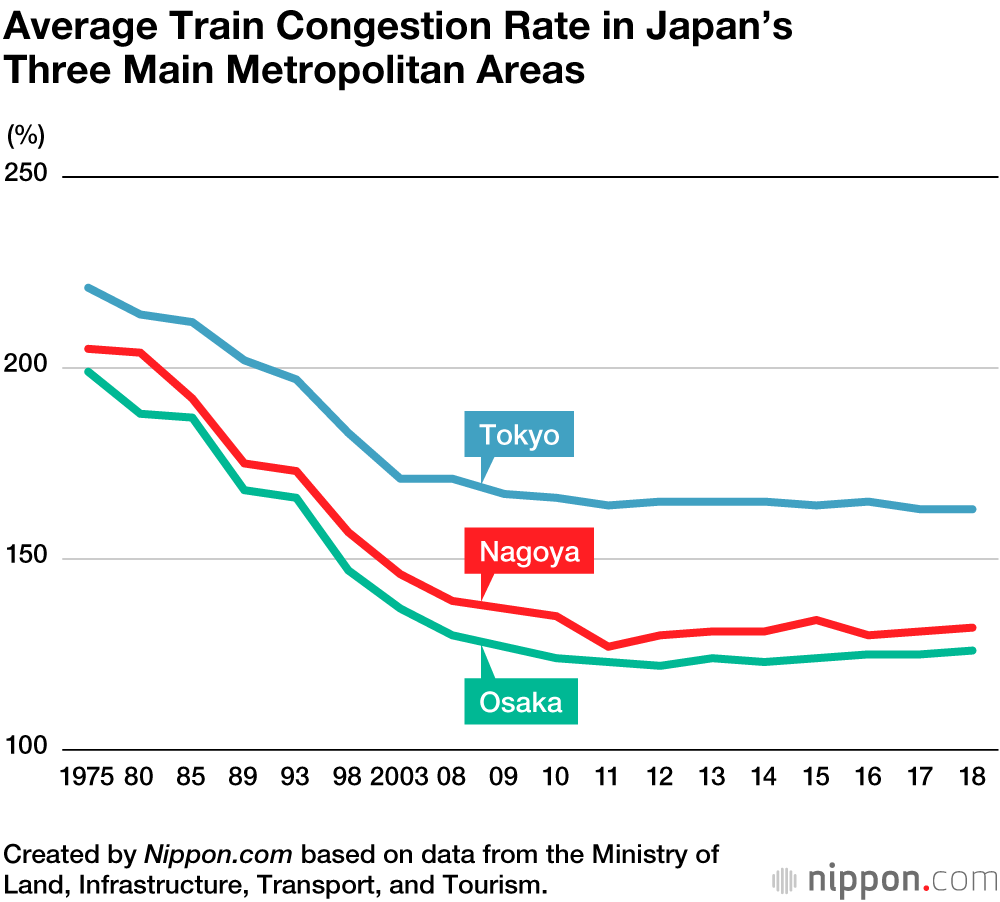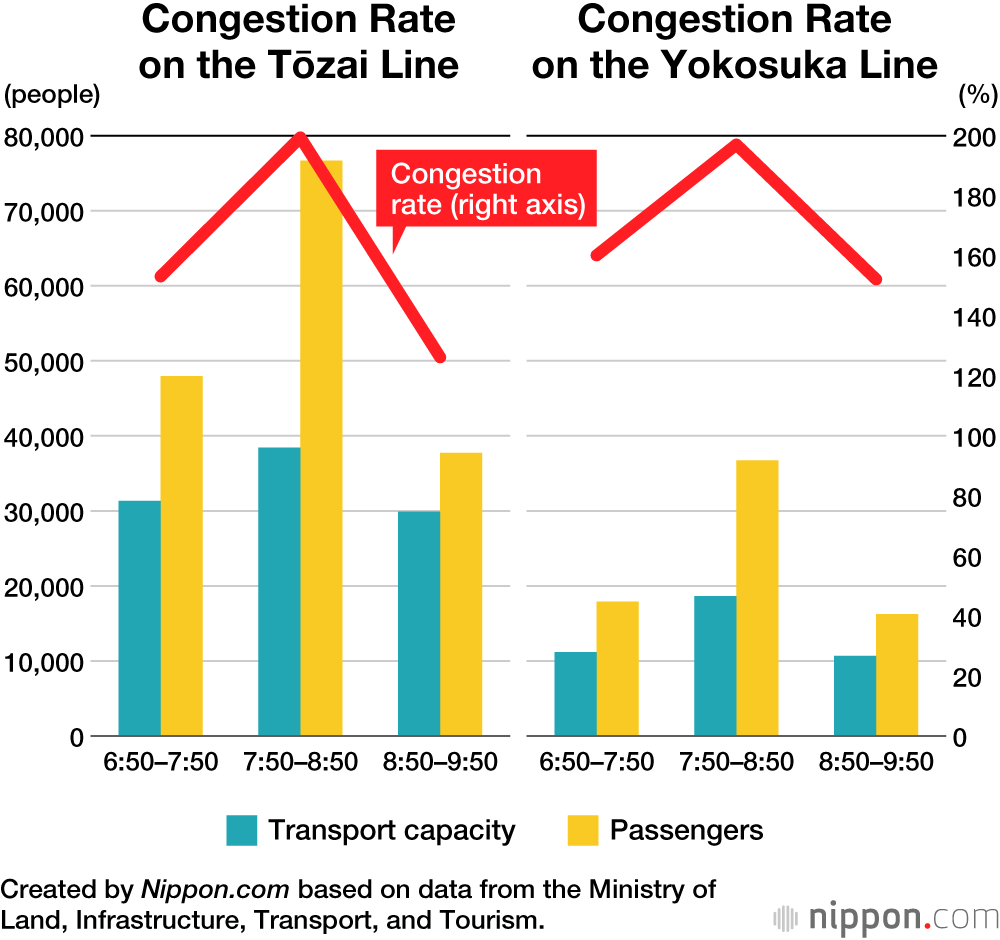
Japan’s Most Congested Train Lines
Society- English
- 日本語
- 简体字
- 繁體字
- Français
- Español
- العربية
- Русский
A report on train congestion from the Ministry of Land, Infrastructure, Transport, and Tourism found that in fiscal 2018, 11 train lines in the greater Tokyo area exceeded the 180% congestion rate set as the upper limit during peak travel hours for passenger comfort. The Tōzai Line on the Tokyo Metro had the highest congestion rate, at 199%, just shy of the 200% level described by MLIT as a situation where “bodies come into contact with each other and one feels considerable pressure.”
The congestion rate is calculated by averaging the level of crowdedness during a train line’s busiest hour. MLIT defines a 100% level as a situation where “all the seats in the train are taken and the standing passengers can find a strap to hold on to”; while 180% is a situation where “a passenger can, with some difficulty, read a folded newspaper.”
Other train lines that exceeded the 180% congestion rate were the Nippori-Toneri Liner, Tōkyū Den’entoshi Line, and eight JR East train lines, including the Sōbu Line, the Yokosuka Line, the Nanbu Line, and the Tōkaidō Line.
Japanese Train Lines Exceeding the 180% Congestion Rate in Fiscal 2018 (All in Tokyo Metropolitan Area)
| Line | Operating company | Congestion rate |
|---|---|---|
| Tōzai Line | Tokyo Metro | 199% |
| Yokosuka Line | JR East | 197% |
| Sōbu Line (local) | JR East | 196% |
| Tōkaidō Line | JR East | 191% |
| Nippori-Toneri Liner | Toei Transportation | 189% |
| Keihin-Tōhoku Line | JR East | 185% |
| Nanbu Line | JR East | 184% |
| Saikyō Line | JR East | 183% |
| Chūō Line (rapid) | JR East | 182% |
| Den’entoshi Line | Tōkyū | 182% |
| Sōbu Line (rapid) | JR East | 181% |
Created by Nippon.com based on data from the Ministry of Land, Infrastructure, Transport, and Tourism.
In Japan’s three major metropolitan areas, the average rate of train congestion was 163% for the 31 train lines in greater Tokyo, 126% for the 20 train lines in the Osaka area, and 132% for the 8 train lines around Nagoya. Train operators have been working to ease congestion by increasing capacity, but the steady population influx to the main urban areas has slowed the pace of improvement, leaving passengers continuing to face “commuter hell.”
MLIT also released figures on the average congestion rate of the 31 train lines in greater Tokyo for the “peak-side” hour before and after the busiest peak times. The ministry hopes this will encourage commuting outside peak times by showing how much less congestion there is. For the Tōzai Line, commuters who travel one hour after the peak congestion rate will have a much more comfortable ride, facing an average congestion rate of 126% instead of the peak 199%.
(Translated from Japanese. Banner photo © Pixta.)

